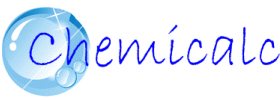

An Atom is defined by its symbol (e.g., "Cl" for chlorine), its atomic number (i.e., the number of protons), and its mass number (i.e., the total number of its protons and neutrons).
An atom is sometimes referred to (e.g., in a printed document) in a terse fashion and sometimes in a verbose fashion. In the terse fashion, it is referred to by its symbol (e.g., "Cl"). In the verbose fashion, it is referred to by its symbol, a dash, and its mass number (e.g., "Cl-35"). The normal way of referring to an atom is the terse fashion.
An element is defined by its symbol (e.g., "Cl" for chlorine), its atomic number (e.g., 17 for chlorine), the mass number of all of its isotopes (e.g., 35 and 37 for chlorine), and the abundance of all of its isotopes (75.78% and 24.22% for chlorine).
Given the mass number and abundance of the isotopes, one can calculate the average mass (e.g., for chlorine the calculated average mass is \((0.7578 \cdot 35) + (0.2422 \cdot 37)\) or \(35.4844\). (Note that the calculated average mass is different from the average mass that would be measured by a mass spectrometer and reported in the periodic table of the elements.)
An element is referred to by its symbol.
A molecule is defined by the atoms it is composed of (e.g., "H" and "O" for water) and the numbers of each of those atoms (e.g., two "H" and one "O" for water).
When one works with molecules one often needs to know the molecular mass, which is the weighted total mass number of all of the atoms in the molecule (where the weights are the amounts of the atoms). So, for example, the molecular mass of water is two times the mass number of "H" plus one times the mass number of "O").
A molecule is referred to by the symbols and amounts of its component atoms. If the amount is greater than 1, the symbol is listed first followed by the amount. If the amount is 1 then it is omitted. When it is possible to do so, the amount is a subscript of the symbol and there are no spaces between symbols (e.g., water is H2O). When subscripts can't be used, the amount is preceded by an underscore character and there are spaces between symbols (e.g., water is H_2 O and sulfuric acid is H_2 S O_4).
Copyright 2013